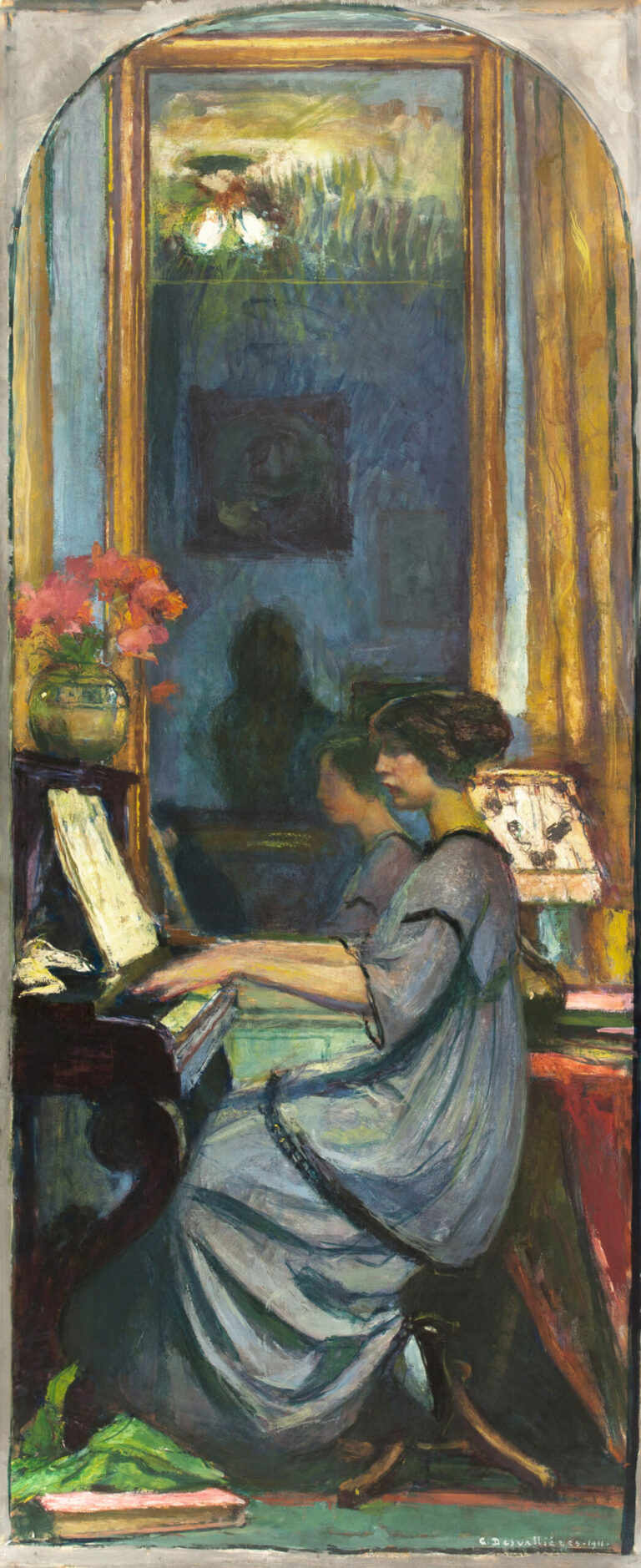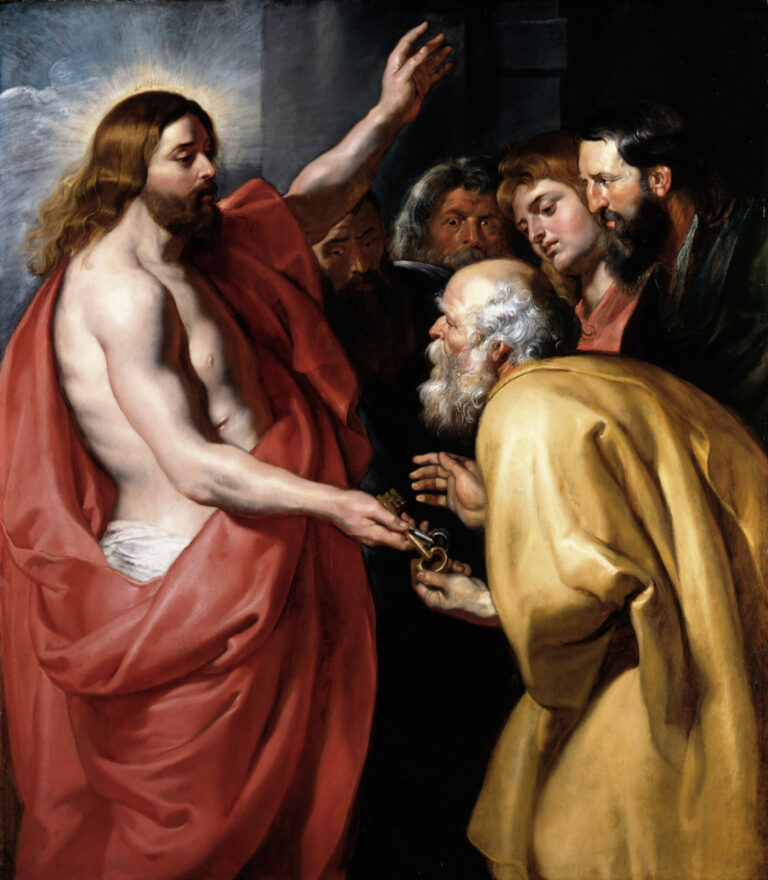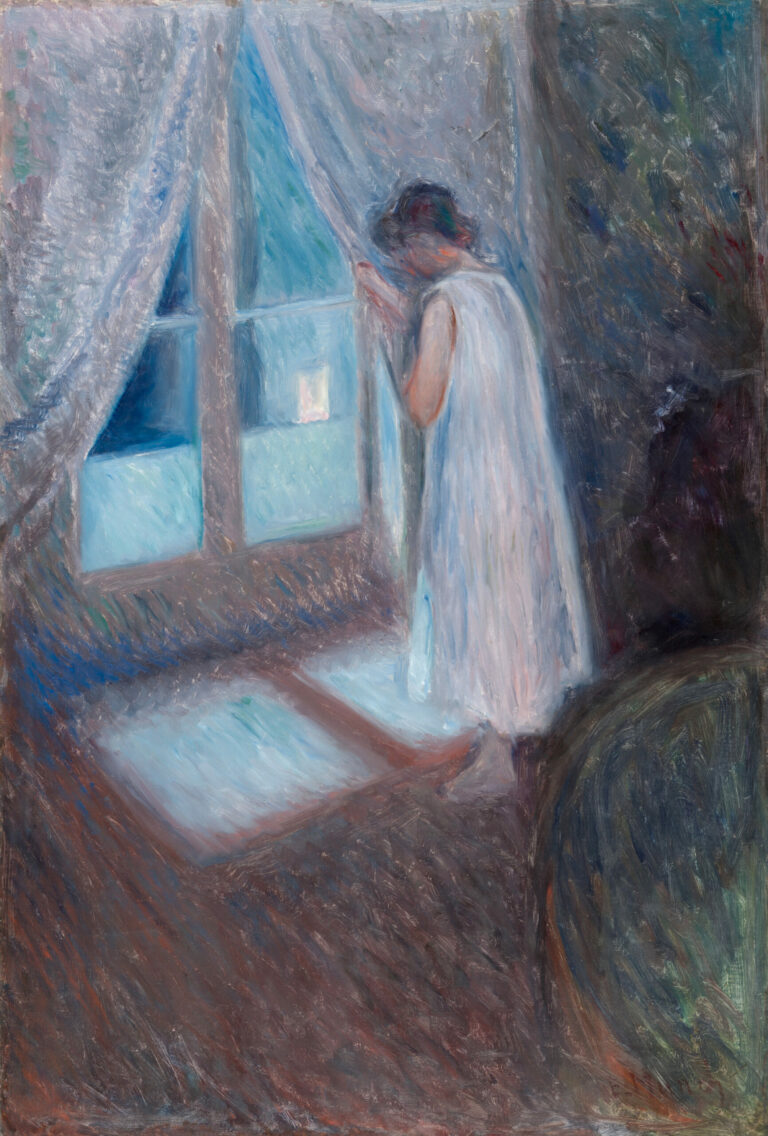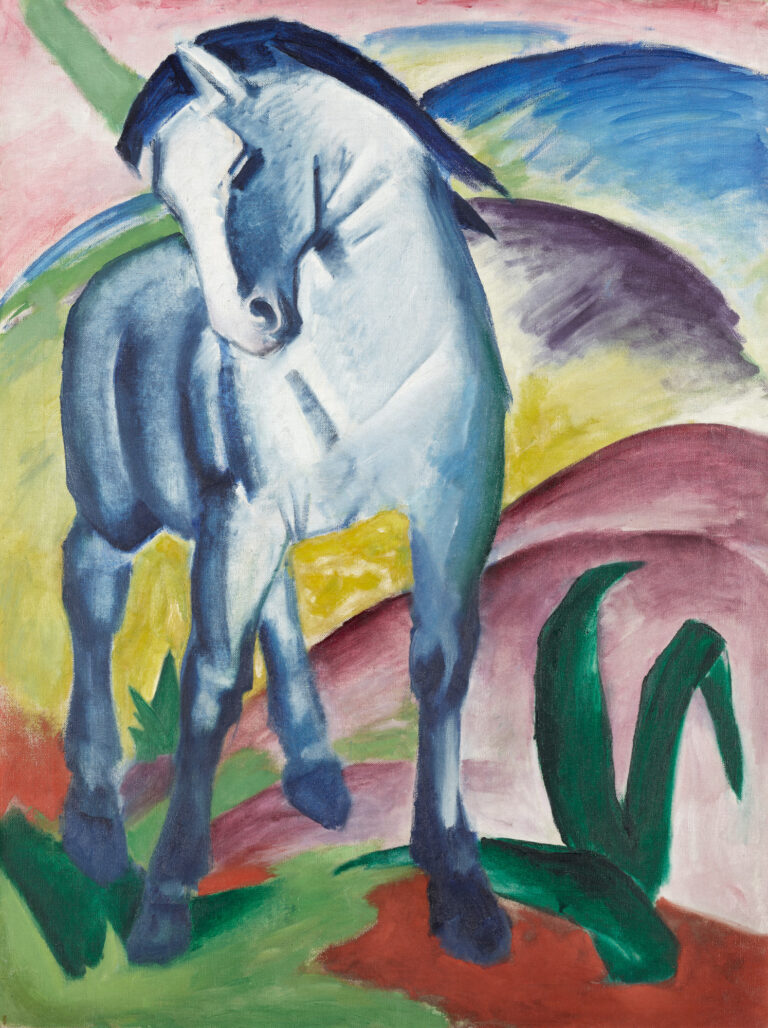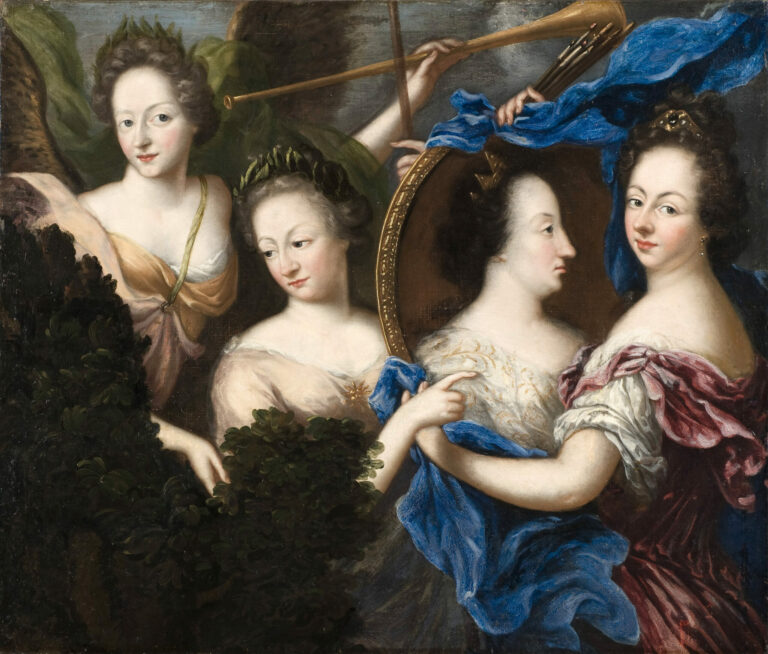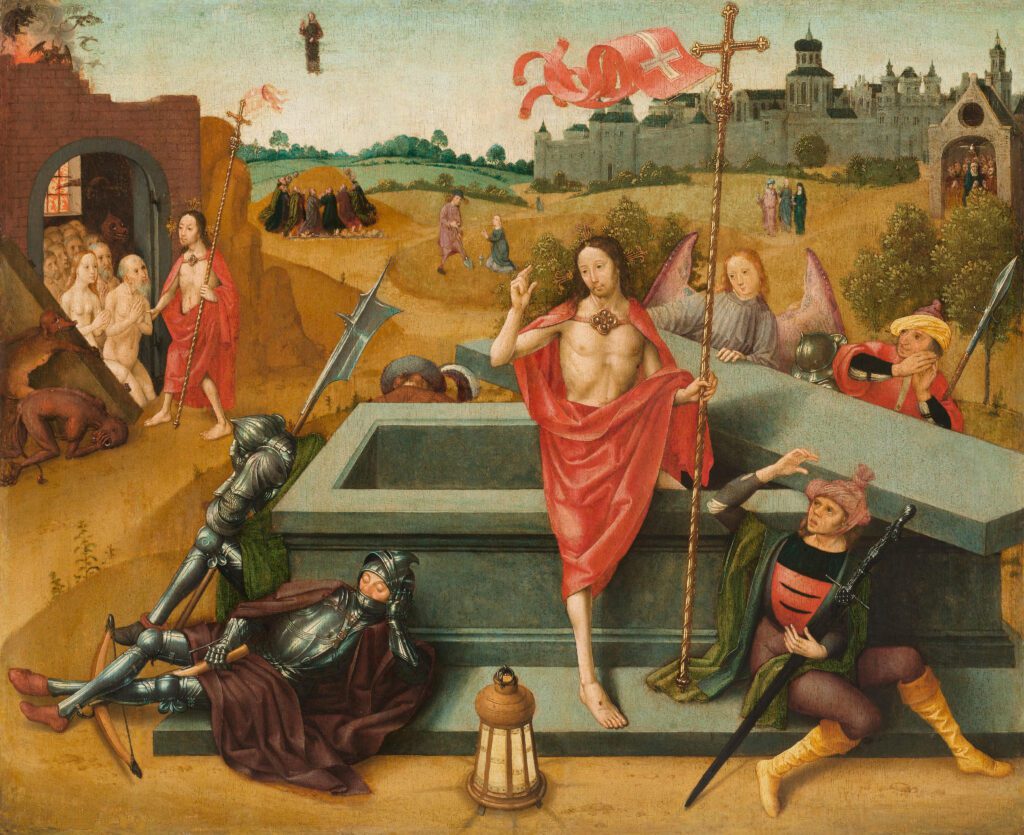
This compelling work presents the triumphant moment of the Resurrection with dramatic intensity characteristic of Flemish painting.
Christ emerges majestically from the tomb, his luminous body draped in a flowing scarlet mantle that contrasts with the cold stone of the sepulcher. His right hand raised in blessing and the processional cross he holds affirm his victory over death. The artist demonstrates remarkable narrative mastery by simultaneously integrating multiple episodes of the Paschal cycle in the background: Christ in Limbo liberating the souls of the righteous, his Ascension to heaven, the “Noli me tangere” scene with Mary Magdalene, the holy women pilgrimaging to the tomb, and Pentecost represented by the illuminated church.
This complex yet harmonious composition is enriched by a typical rolling landscape and a shimmering palette dominated by reds and greens, creating an atmosphere both mystical and earthly.
Further Information:
- The Resurrection of Christ, by the circle of the Master of the Death of Mary of Amsterdam, c. 1485-1500
- 53.5 x 65 cm
- The Rijksmuseum, Amsterdam
- https://www.rijksmuseum.nl/en/collection/object/Resurrection-of-Christ–4a3c31589d7bd734bf026d066a3ea5ae
This painting originates from the circle of the Master of the Death of Mary of Amsterdam, an anonymous artist active between 1485 and 1500, whose identity remains mysterious but whose influence was considerable in the Southern Netherlands. His art is distinguished by meticulous attention to detail, sensitivity to emotional expressions, and an ability to merge Flemish realism with idealism. In this work, we find his refined technique of drapery, his skill in orchestrating complex scenes, and his deep knowledge of Christian iconography.
The artist, probably trained in Utrecht or Amsterdam, belongs to the tradition of the great Flemish Primitives while anticipating certain innovations that would mark the Northern Renaissance.

